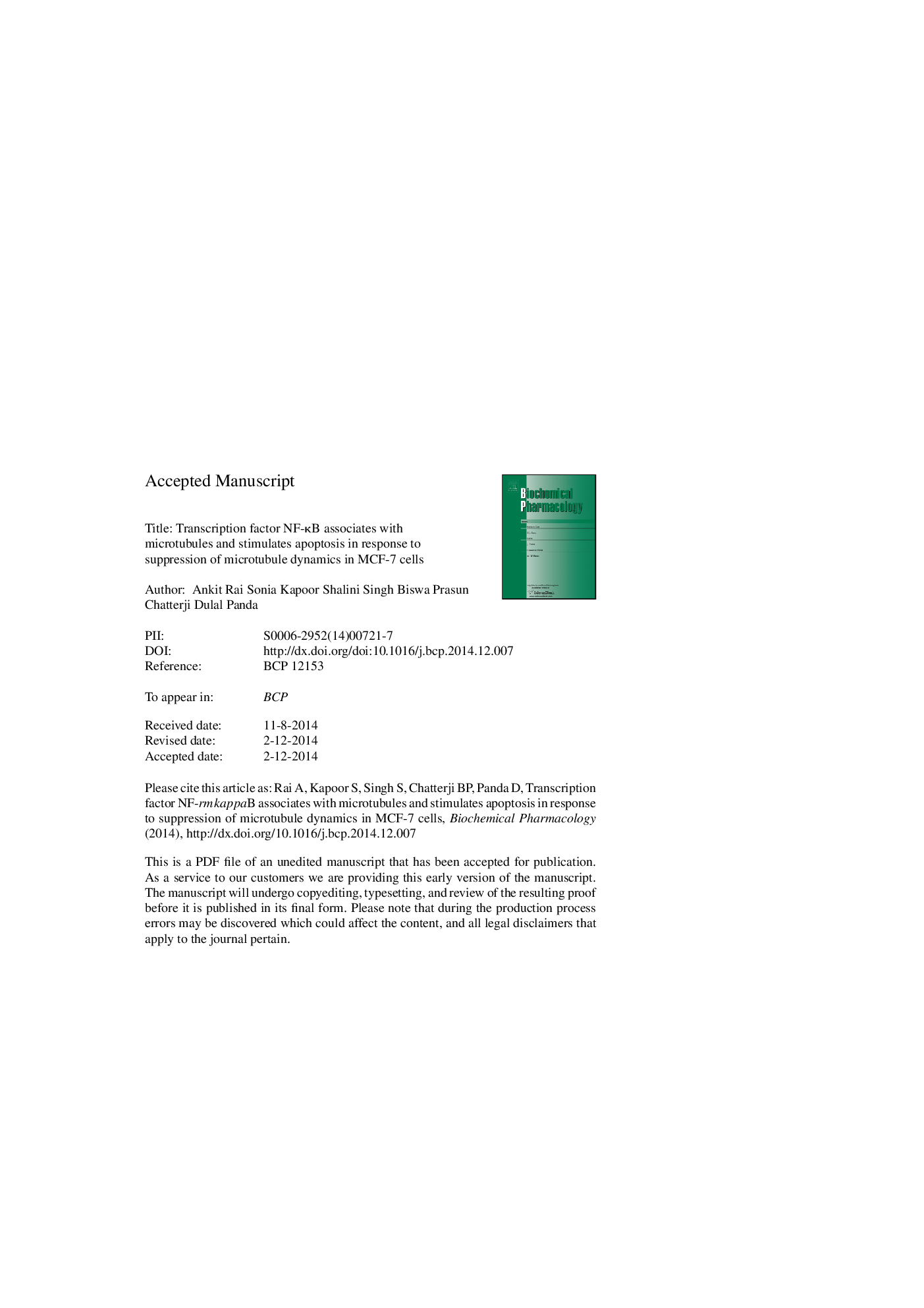| Article ID | Journal | Published Year | Pages | File Type |
|---|---|---|---|---|
| 5823320 | Biochemical Pharmacology | 2015 | 54 Pages |
Abstract
NF-κB, a master regulator of several signaling cascades, is known to be actively transported in the nucleus in response to various stimuli. Here, we found that NF-κB is associated with polymeric tubulin and co-localized with microtubules in MCF-7 cells. Using TN16, a known microtubule targeting agent, we found that microtubule dynamics plays a critical role in NF-κB-microtubule interaction. Treatment of cells with low concentrations of TN16 (25 and 50 nM) that suppressed microtubule dynamics without visibly affecting microtubule organization enhanced the association of NF-κB with microtubules and facilitated nuclear translocation of NF-κB. Colchicine and vinblastine also produced similar nuclear translocation of NF-κB. Further, nuclear import of NF-κB activated apoptotic pathway in the cells that were blocked in mitosis by TN16 treatment suggesting that NF-κB acts as a pro-apoptotic protein in response to the suppression of microtubule dynamics. Interestingly, in the presence of high concentrations of TN16 that extensively disrupted the microtubule network, though there was an increase in the apoptotic cell death, the interaction of NF-κB with microtubules and its nuclear import were significantly reduced. Under these conditions, we detected an increase in the level of phosphorylation and nuclear accumulation of ERK, a MAP kinase, suggesting that the induction of apoptosis was caused by ERK signaling. The results indicate that the interaction of NF-κB with microtubules, its nuclear accumulation and subsequent gene transcription are critically dependent on microtubule dynamics. The data suggest a correlation between the functional status of microtubules and different apoptotic mechanisms invoked in response to microtubule inhibitors.
Keywords
Related Topics
Health Sciences
Pharmacology, Toxicology and Pharmaceutical Science
Pharmacology
Authors
Ankit Rai, Sonia Kapoor, Shalini Singh, Biswa Prasun Chatterji, Dulal Panda,
